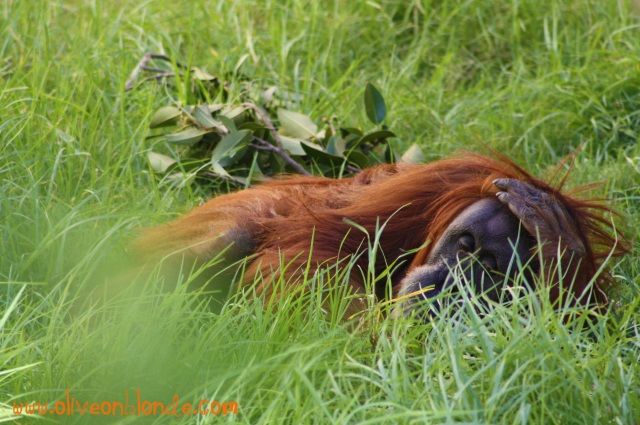Palm Oil and labelling
As Australian consumers we trust that, when looking at product ingredient lists, what we see is what we get – but this is currently not the case. In 2008 FSANZ (Food Standards Australia New Zealand) rejected an application for the compulsory labelling of Palm Oil. This means that the only edible oils that need be declared are soybean, sesame and peanut oil (due to allergies). It is perfectly acceptable to label all other plant based oils (including palm) simply as ‘vegetable oil’ (even though it is, in fact, a fruit). We have a right to know exactly what we are consuming, and consuming it we certainly are: the average Australian ingests or applies 10 kilograms of palm oil every year!
Read your labels…
…on Food
I must sound like a stuck record but here it is again – read the label! Repetitive? Yes. But the fact of the matter is, making a habit of reading your labels is one of the biggest steps to take if you want to live a more ethical existence. In this case the first hurdle is to identify whether Palm Oil is even being using in the product. This is not as cut and dry as identifying, say… nuts, gluten or dairy. It seems that companies are only willing to be transparent when there is risk of allergies in their buyers. An easy example of labeled palm oil will list it as Palm Oil or Palmolein. However with the more vague products however, you will have to dig deeper. While it is perfectly legal to deceivingly bundle palm in with vegetable oil the amount of saturated fat in a product must, by law, be declared. So if a product lists a vegetable oil look straight to the saturated fat level for the vital clue. As I mentioned earlier Palm and Coconut oils are the only vegetable oils high in saturated fat so If the levels are high it is very likely these oils have been used. While it’s not bulletproof method it definitely helps to identifying a hidden ingredient!
Once you have established the presence of the oil look for the RSPO (Roundtable for Sustainable Palm Oil) logo. If it is missing it is highly likely that the palm oil was produced unsustainably. But if you are not satisfied coming to this conclusion, ring the customer feedback line and ask them is it is RSPO certified.It if is not explain the reasons that you will be taking your hard earned cash elsewhere. Those customer lines are set up to learn customer expectations and while they may not respond to heart disease and orangutan extinction they’ll listen if you mention money!

Image courtesy of http://www.palmoilaction.org.au
…on cosmetics
Strangely enough, the requirements for labelling palm oil in the cosmetics industry are far stricter than those that apply to our food industry. In cosmetics, palm oil must be listed as an ingredient without exception. However, as Juliet asked Romeo, what’s in a name? Here is a list of all the names used for Palm Oil (or chemicals containing it);
- Sodium Laureth Sulphate
- Sodium Lauryl Sulphates
- Elaeis Guineensis
- Glyceryl Stearate
- Stearic Acid
- Sodium dodecyl Sulphate (SDS or NaDS)
- Palmate
- Palm Oil Kernal
- Palmitate
- Steareth -2
- Steareth -20
- Sodium Lauryl Sulphate
- Sodium lauryl sulfoacetate
- Hydrated palm glycerides
- Sodium isostearoyl lactylaye
- Cetyl palmitate and octyl palmitate
- Anything with palmitate at the end
It is a hell of a lot to remember. Zoos Victoria have been major drivers in enforcing correct labelling and have this cute little print out card that you can keep in your wallet to pull out before you buy your shampoos and conditioners. A solution that I have found very effective is buying certified organic shampoos and conditioners. Still check the label, but products like Sukin list the scientific name for each ingredient and in brackets next to it the common name i.e. Lavandula Angustifolia (Lavender) Oil
Know your companies and products
While it sounds like it is a massive undertaking to eliminate palm oil for your shopping trolley it gets easier every week. You will start to recognise the brands and products that do use them and the companies you want to support because they don’t. Since I decided to eliminate palm oil from my home I have noticed a very welcome side-effect: I am no longer buying unhealthy packaged foods! It has forced me to be a lot more creative with my decisions which often leads to healthier options. Before when friends came over I would dish out a bowl of greasy potato chips, but since the switch they have been welcomed into my home by the smell of toasting flat breads or healthy crudites. It has been a really positive change in my home.
Spread the word
Knowledge is power and no more so than when we are referring to Palm Oil. Something that is so far-reaching, that all of us have the potential to be contributing too needs to have more light shone on it. Chat with your friends and family about it, forward them this article to them if need be or you could even send them this letter thanks to the amazing folk at Planet Ark.
I hope this has provided you with a few options when considering how you can cut down or even eliminate palm oil from your life. If we react to unsustainable palm oil in products by voting with our wallets, then companies will be forced to find sustainable alternatives in order to meet consumer demand. As a consumerI demand that some of the most diverse rainforest on our planet are preserved. I demand that we stop killing (on average) 50 Orangutans every week. I demand that we allow local people the right to their land, and I demand that we stop depriving future generations of some of our world’s greatest wonders.




Some fantastic insights here. Love the article and love the site Em!
Pingback: Going Green (with your skin care routine) | Olive on Blonde
Pingback: Green Up Your Diet | Olive on Blonde
Pingback: AA for Plastic Abusers | Olive on Blonde
Thank you so much for spotlighting the evils & many disguises of palm oil! After watching this short video I have included, i no longer buy into the “sustainable” myth as it is, to quote the film, a “green wash pack of lies”! Because I don’t buy the myth, i no longer buy anything with palm oil & suggest others do the same. I have met the orangutans & they are so amazing, amusing and in dire need of all of our help, along with so many other species & indigenous people! Please watch! http://youtu.be/1NAYWHb-xaU
Hi Emily: I was researching on this issue, and the leaflet prepared for the Rainforest Action Network (RAN) made a huge claim against the SUSTAINABLE Palm Oil, it looks like they are not responsible at all (related to violations to human rights of their workers, and other issues); so RAN is asking for a different labelling, on RESPONSIBLE PALM OIL. Here I send you the information:
Click to access po_factsheet.pdf
Thanks!